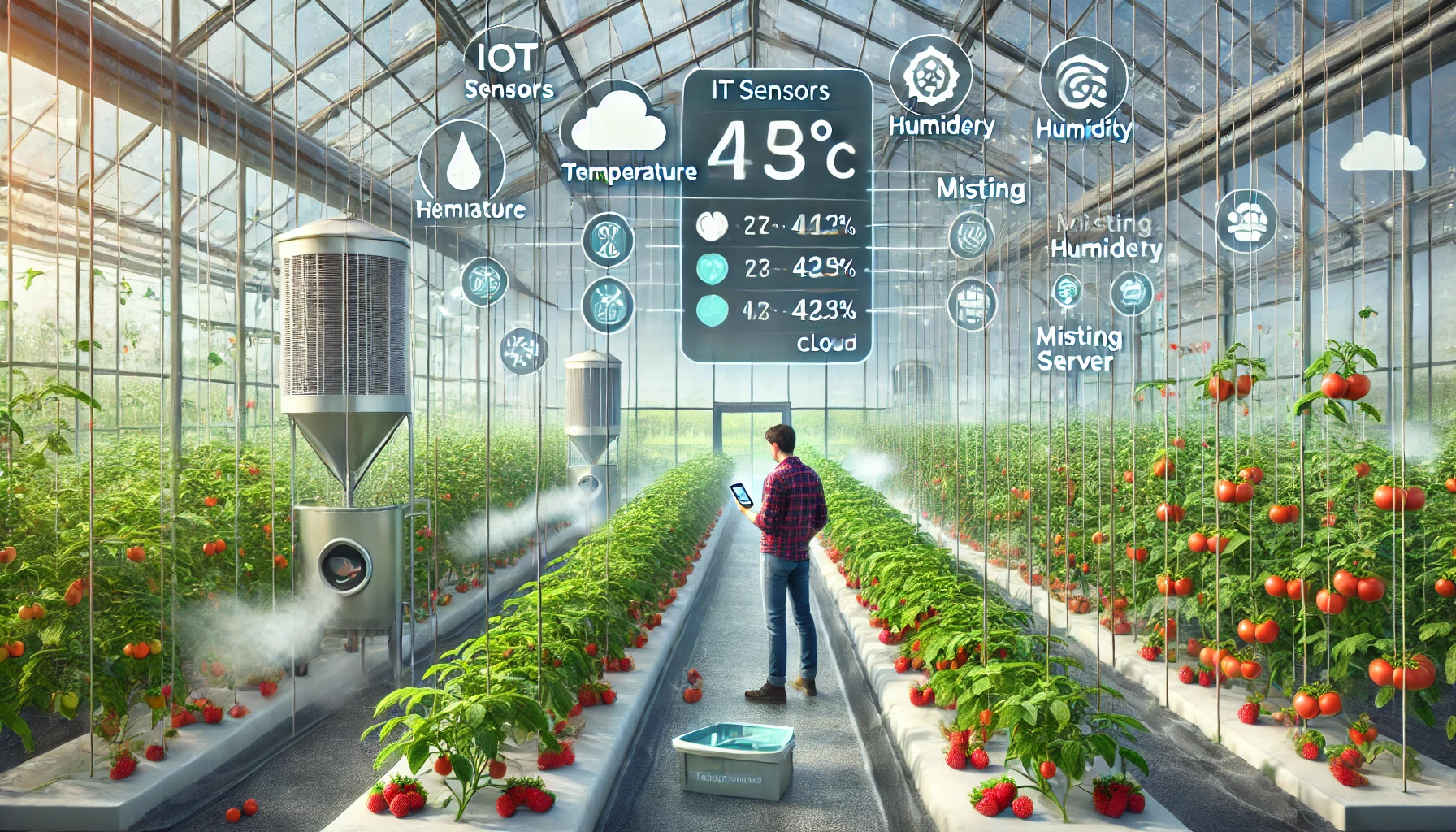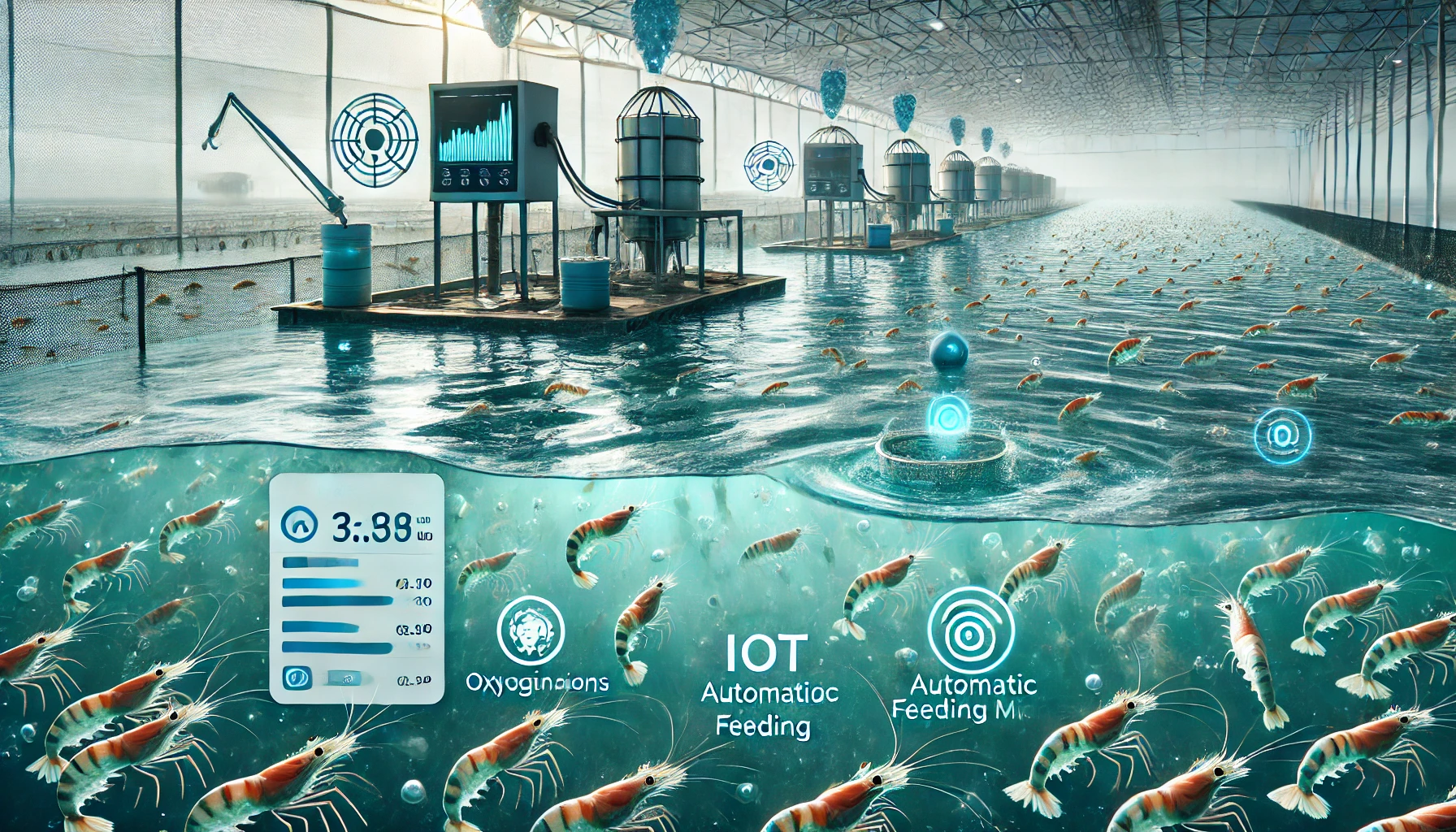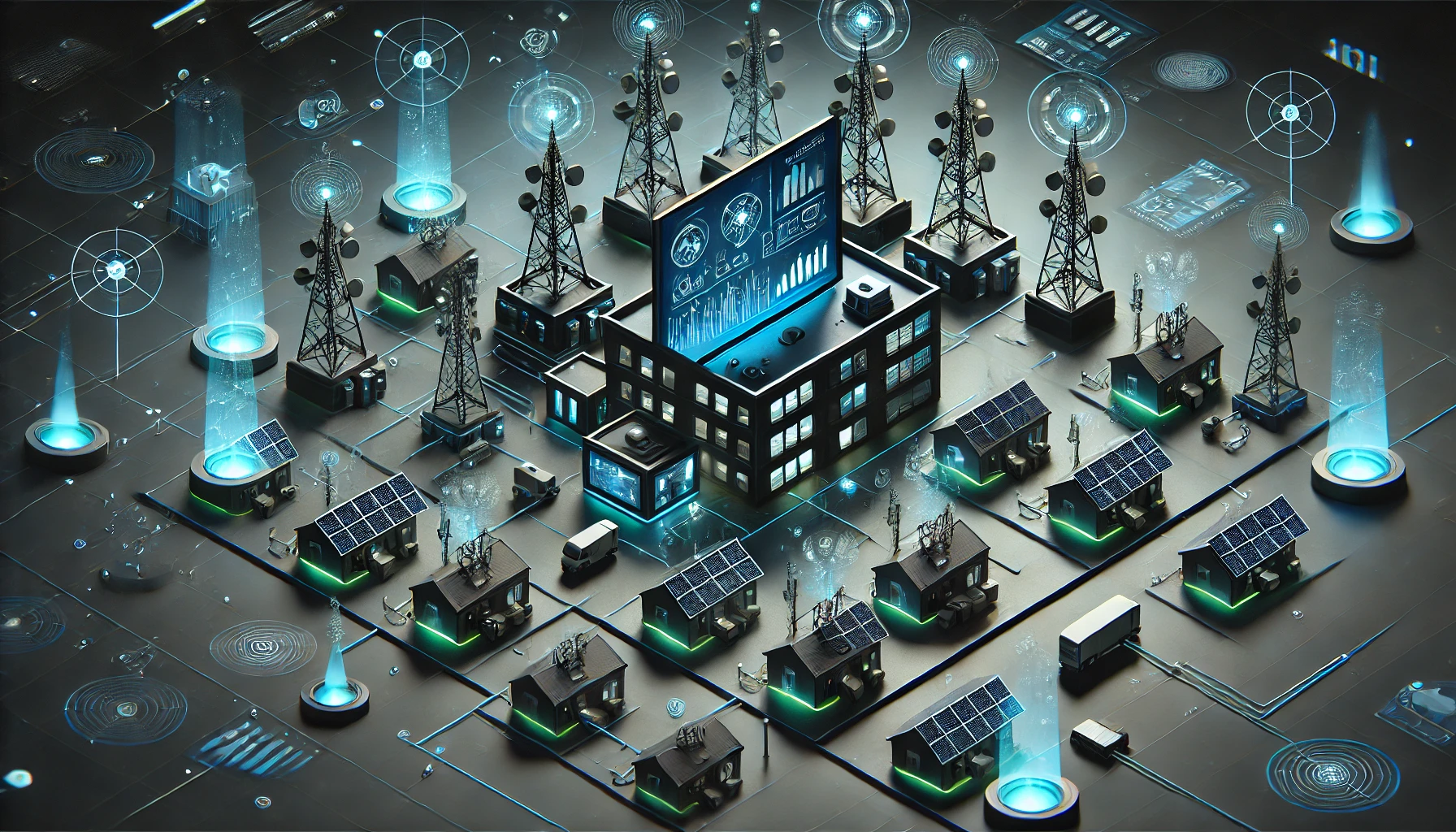Overview
Our IoT agricultural system has been successfully deployed in real-world applications, utilizing state-of-the-art wireless sensors and edge computing to support precision agriculture and optimized farm management. The system incorporates an array of environmental sensors, including air temperature and humidity sensors, wireless light intensity sensors, water pH and EC sensors, and water pressure sensors. All data from these sensors are aggregated and transmitted to a central cloud-based platform via the MQTT protocol, enabling real-time data acquisition, advanced analytics, and environmental parameter control through machine learning algorithms.
The system is further integrated with automation devices such as pumps, drip irrigation systems, and automated shading screens, providing seamless orchestration of irrigation scheduling, light modulation, and nutrient delivery. These devices can be configured to operate autonomously based on pre-defined schedules or dynamic sensor thresholds, ensuring that crops are consistently maintained within optimal environmental conditions. Such automated actuation capabilities reduce manual intervention and enhance operational efficiency. The solution supports remote monitoring and control through an intuitive user interface accessible via mobile and web applications, leveraging cloud computing to deliver seamless access to farm operations from any location. An intelligent alert system, utilizing rule-based triggers and anomaly detection models, sends real-time notifications via SMS or email, immediately alerting users to critical issues such as deviations in pH levels, abnormal water pressure, or temperature and humidity outliers.
Our IoT agricultural system not only achieves significant water, energy, and labor cost savings but also enhances crop yield and quality through data-driven decision-making and precision agriculture techniques. The system has been successfully implemented in multiple high-value crop farms nationwide, yielding quantifiable improvements in crop productivity, disease management, and resource utilization. Currently, the solution has been deployed at orchid farms in Hoa Binh, chili farms in Vinh Phuc, melon farms in Quang Ngai, and durian farms in Binh Phuoc. The system’s scalability and modular architecture enable it to be tailored for a wide range of crops, meeting the diverse requirements of modern agribusinesses and advancing the digital transformation of agricultural practices.
Functional Modules:
- User Management & Authorization: Manage user profiles, roles, and permissions to ensure secure access and operational hierarchy.
- Farm Management & Assignment: Manage farm profiles and assign responsibility to designated staff for streamlined operations and oversight.
- Digital Farm Map Management: Visualize and manage farm layouts using a digital map interface for efficient resource allocation and farm operations planning.
- Sensor Data Monitoring: Real-time monitoring of environmental parameters collected from IoT sensors, enabling data-driven decision-making.
- Manual Control Management: Directly control connected devices such as pumps and irrigation systems through a centralized interface.
- Automated Control Management: Configure control templates and set up automated operations based on sensor readings and predefined thresholds.
- Surveillance Camera Management: Integrate and manage camera feeds for real-time surveillance and visual monitoring of farm areas.
- Notification Management: Set up alerts and notifications for anomalies, system malfunctions, or predefined environmental conditions.
- Reporting & Analytics: Generate comprehensive reports on environmental conditions, equipment performance, and overall farm productivity.
IoT Devices:
- IoT Gateway (eWON): Collects and transmits data from connected sensors and devices to the cloud platform for real-time analysis and control.
- Wireless Soil Sensors: Measure soil moisture, temperature, and other relevant parameters, providing critical data for soil health management.
- Wireless Air Sensors: Monitor temperature and humidity in the environment, ensuring optimal atmospheric conditions for crop growth.
- Wireless Light Intensity Sensors: Measure light intensity to optimize shading systems and ensure adequate light exposure for crops.
- Wireless Water Sensors: Include water pH sensors, EC (Electrical Conductivity) sensors, water pressure sensors, and water shortage alerts, providing a comprehensive view of water quality and availability.
- Surveillance Cameras: Capture real-time video for security and operational monitoring, integrating with the IoT platform for centralized management and anomaly detection.



